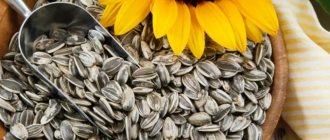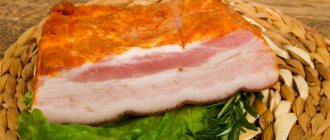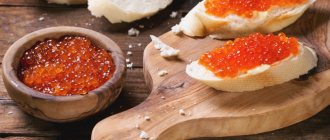What could be tastier than aromatic mushroom soup, pizza or potatoes with mushrooms? It’s no wonder that adults often ask: is it possible to give mushrooms to children? Unfortunately, there is no definite answer to this pressing question. Opinions differ among both ordinary people and venerable doctors. On the one hand, this product is delicious and extremely healthy. On the other hand, every year, due to his fault, hundreds of children and adults end up in the hospital with poisoning. Let's try to sort out the conflicting information.
Mushroom is a tasty and appetizing component of the daily diet. It is added to first and second courses, aromatic snacks and flour delicacies are prepared from it. This is a worldwide approved product that can be eaten dried, boiled, baked, or fried. Mushrooms are enjoyed all year round, collected in the forest or bought in the supermarket.
Composition of mushrooms
Before deciding at what age you can safely give your child mushrooms, and whether this can be done, we recommend that you find out their composition. The product contains:
- A protein that is comparable in nutritional value to that found in meat. Proteins in 100 g of meat are comparable in nutritional value to 1 kg of protein. mushrooms The only difference between the products is that mushroom fiber is poorly digestible and difficult to digest in the stomach.
- Carbohydrates are in small quantities, the absorption of which is complicated by the same fiber.
- Fats that are quickly absorbed in the stomach. Champignons, saffron milk caps and porcini mushrooms contain the largest amount of fat.
- Sugary substances that give the product a pleasant taste.
- Essential oils that provide a persistent mushroom aroma.
- Resins responsible for the specific pungent taste.
- Lactic, butyric, oleic, stearic, acetic and other organic acids.
- Enzymes and minerals, including potassium and phosphorus.
- Niacin, vitamins D, A, C, groups B and PP.
- Amino acids, animal starch glycogen, lecithin, beta glucans and water.
It is recommended to eat mushrooms with caps, because the maximum concentration of nutrients is contained in them. Legs are less nutritious, so it is not recommended to introduce them into children's diets.
How to properly introduce it into a child's diet
Like any new product, introduce mushrooms into the children's diet in minimal quantities. This could be mushroom sauce or meat broth with finely chopped oyster mushrooms. A little later, offer cutlets or vegetable stew with mushrooms. When preparing children's dishes, use only mushroom caps. And, of course, don’t insist if the child doesn’t like the dish.
As for fried, salted and pickled mushroom dishes, they should not be given to small children. Marinades, salt and fats are an additional burden on the child’s immature digestive system.
Heat treatment is always required; the product should not be given to children in its raw form. Of the forest mushrooms approved for baby food, give preference to varieties of categories 1 and 2. Mushrooms of the first category are: white mushrooms, real milk mushrooms and saffron milk caps. The second category includes: champignons, butter mushrooms, oak mushrooms, pink mushrooms, white mushrooms, boletus mushrooms, and aspen milk mushrooms. It is prohibited to use other varieties in baby food.
Benefits of forest gifts
Why are mushrooms so attractive and useful?
- This is a low-calorie product that is ideal for a diet. The high protein content has allowed mushrooms to be one of the main components of the vegetarian diet.
- Lecithin removes cholesterol from the body and prevents its accumulation. The product is useful for use in cases of impaired metabolism, urolithiasis and cardiovascular problems.
- Mushrooms are considered an excellent prevention of hypertension, they are effective in the treatment of obesity and diabetes, atherosclerosis and heart disease.
- Beta-glucans of the product strengthen the immune system, increasing the regenerative functions of the body.
- Most types of mushrooms contain ergothioneine. This is a powerful natural antioxidant that prevents the occurrence of cancer and helps alleviate the condition in the presence of tumors.
Mushrooms help in the prevention of various diseases. With their help, you can cure pustular rashes and sore throats, parasitic infections and frostbite. Certain types are recommended for migraines, gout, gastric and duodenal ulcers, tuberculosis and bronchial asthma.
At what age can children be given mushrooms?
Photo by Maxim Vechera
In an effort to diversify a child’s diet, young mothers often forget to correlate the benefits and harms of individual foods for the child’s body. Mushrooms are a nutritious product; it’s not for nothing that they are called “forest meat.” But why do pediatricians unanimously advise not to rush to introduce them into children’s diets?
Mushrooms contain chitin, the substance that animal shells are made of. The stomach of even an adult is not able to digest it, let alone a child, whose digestive tract is fully formed only by the age of seven. In addition, chitin interferes with the absorption of other nutrients that are so abundant in mushrooms.
The second risk factor is that mushrooms, like a sponge, absorb a lot of harmful substances from the environment. And since the environmental situation today leaves much to be desired, one can imagine what modern mushrooms are “enriched” with, especially those collected near highways and industrial enterprises. It’s unlikely that you want all this to end up in your baby’s fragile body.
Don't panic ahead of time. Pediatricians still allow mushrooms to be given to children, but they specify the type and age of the child. True, each specialist has his own advice. The recommended age for children to safely consume mushrooms ranges from 2 to 10 years. Therefore, before you put a piece of mushroom on your baby’s plate, it is better to study all the information on this issue and be sure to consult with the doctor who is observing the child.
In any case, introduce mushrooms into your child’s diet gradually and in moderation. You shouldn’t give him a whole frying pan of fried mushrooms at once. By the way, it is advisable not to give fried, salted and pickled mushrooms to children at all. And you need to start getting acquainted with “forest meat” with broths and sauces, then gradually move on to soup, stewed potatoes with mushrooms, and so on.
ON A NOTE
What do doctors advise?
• All pediatricians are unanimous in their opinion: mushrooms should not be present in the food of children under 2 years of age.
• After 2 years, the most courageous experts, in particular, the authoritative pediatrician Evgeny Komarovsky, allow the introduction of so-called civilized mushrooms into the children's diet - cultivated, industrially processed champignons and oyster mushrooms sold in stores. But gradually and little by little. Other pediatricians recommend delaying this point to 5 years.
• By the age of 7, a child’s digestive organs, as a rule, are already fully formed. Therefore, most doctors allow mushrooms to be given to children from this age. But, again, it is better to start with cultivated mushrooms and small portions.
• No earlier than 10-12 years of age, doctors recommend eating mushrooms for children who have at least minor health problems, especially those related to the digestive tract. If you introduce mushrooms into the diet of such children early, they may suffer for the rest of their lives.
CHILDREN'S MENU
Champignon puree soup
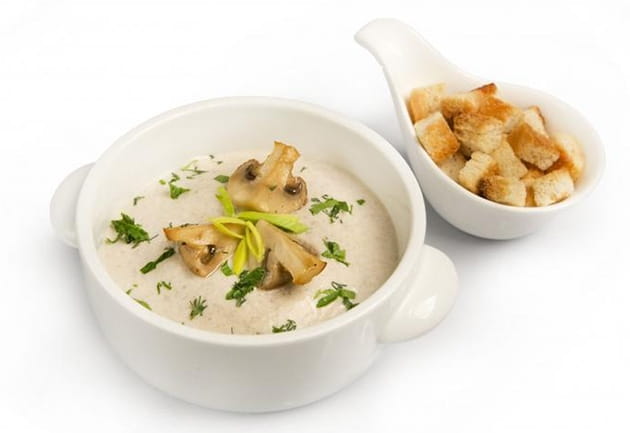
You will need: onion - 1 pc., butter - 1 tbsp.
l., wheat flour - 2 tbsp. l., hot water - 1 tbsp., whole milk - 2 tbsp., fresh champignons - 250 g, 10% fat cream - 200 ml, salt - to taste, fresh parsley - a bunch. Melt butter in a soup pan, add finely chopped onion, and sauté for 3-5 minutes. Add flour and simmer for a minute. Remove the pan from the heat, add a couple of tablespoons of water, beat with a mixer into a fluffy mass, gradually pour in the remaining water, add milk. Place the pan on the stove again and bring to a boil, then reduce the heat and simmer for another five minutes. Add washed and randomly chopped mushrooms, cook for 15 minutes. Pour in the cream, stir, add salt to taste, bring to a boil and cook for a couple more minutes over low heat. Using an immersion blender, puree the soup, garnish with parsley and serve, optionally with croutons.
Why are mushrooms harmful?
The stem and cap of forest inhabitants have a loose porous structure and absorb anything from the ground, soil and air. The first to get there are toxins and poisons, as well as salts of lead, mercury, cadmium and other heavy metals. The digestive system of children is not as perfect as that of adults and is not able to digest this cone. It is also necessary to remember that the concentration of toxins increases during dry seasons, when metabolic processes inside the fungus slow down significantly.
In addition, mushroom pulp is considered a heavy food due to its high fiber content. It accumulates in the intestines, clogging it, preventing the nutritional components of other foods from being fully absorbed. In combination with chitin, which is also found in mushrooms, it causes indigestion. Considering the baby’s fragile immunity, all this together can provoke a persistent allergy to mushrooms and dishes made from them.
What is useful to know:
- You can give children only those types of products that you are 100% sure of the quality and safety of. This applies to oyster mushrooms and champignons; a little later the menu can be expanded to include porcini mushrooms, boletus mushrooms and honey mushrooms.
- Milk mushrooms, saffron milk caps and red caps, especially those collected near the road and in unknown places, are strictly prohibited.
- It is forbidden to give mushrooms to children if they were purchased not in a supermarket, but from hand or in spontaneous markets.
- A child should not eat pickled, fried or salted mushrooms. The later you start allowing him to eat foods that are heavy and useless for the body, the better.
Which mushrooms to avoid?
Any wild species are not for baby food. If in the pre-industrial era it was safe to eat mushrooms grown in the forest, it is reckless to do so now. They absorb all toxins and heavy metal salts found in the soil. There are few ecologically clean zones left on the planet, so there is a high risk of poisoning after eating even good-looking ones.
Another reason to avoid wild mushrooms is the similarity of many of them to poisonous ones. Ordinary honey mushrooms are easily confused with false mushrooms, and russula with pale toadstools.
There are forest species that are conventionally called edible. Their poison accumulates in the body gradually, increasing the risk of developing severe poisoning in the future.
You need to stop eating pigs, morels, strings, russula, and honey mushrooms. You can give children mushrooms grown in cultivation, on special plantations or on your own farm.
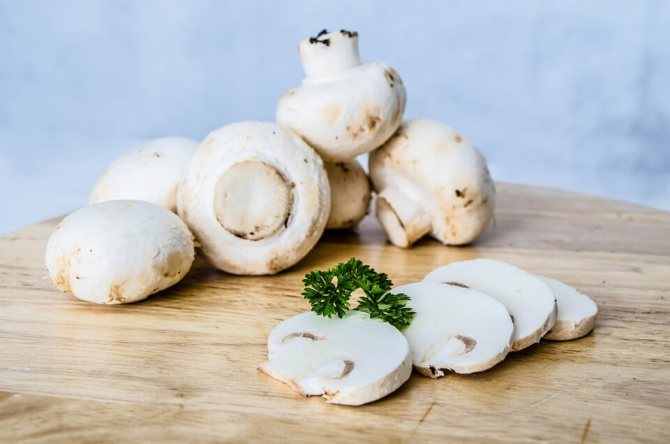
How to buy
Buying mushrooms from hand or at a spontaneous market is fraught with trouble. A poisonous specimen accidentally found among edibles can lead to tragedy. You should give preference to a certified product in large stores.
You should choose young, strong mushrooms, without dark spots or bruises. A wrinkled surface, a musty or chemical smell is a reason to pass by.
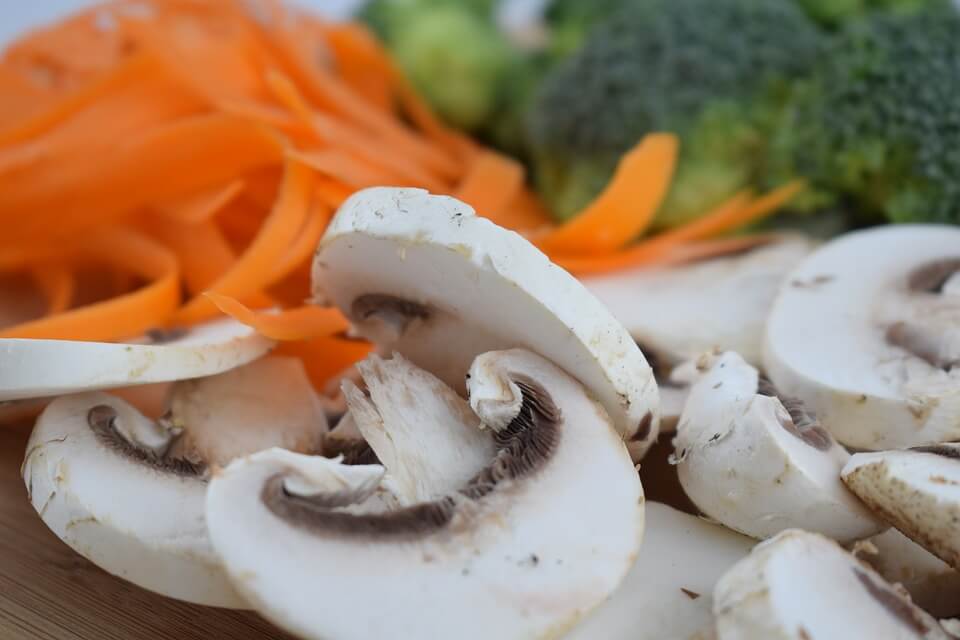
How to cook
Mushrooms should be included in the diet in crushed form: prepare sauces from them, add them to vegetable stews, soups or casseroles.
Suitable options:
- minced mushroom caviar with carrots and zucchini;
- creamy soup with mushrooms;
- potato croquettes with champignons.
Children over 5 years of age can combine mushrooms with meat dishes: add to minced cutlets, goulash.
Before cooking, the plant product must be soaked for 2 hours in clean water and rinsed several times. Boil or simmer for at least 40 minutes.
The idea of feeding babies salted, canned or fried mushrooms should be abandoned. Large amounts of fat, salt, vinegar and spices are only suitable for adult snacks. The combination with butter dough, sausages or hard cheeses is also not recommended for children under 10 years of age, as it increases the risk of indigestion.
Mushrooms in the diet of children
When can forest products be introduced into a child’s diet? According to doctors, doing this before 2 years is categorically not recommended. As for children from 2 to 5 years old, mushrooms are introduced into their menu in limited quantities and gradually.
- This must be a store-bought product.
- First, mushrooms are served as an addition to the main dish, using them, for example, as a sauce.
- A little later, the baby is offered peeled, chopped and boiled mushrooms no more than once a week. You can make broth, puree soup or regular soup from them.
At what age can children be given mushrooms? The optimal age is 7-8 years. By this time, babies have a fully formed digestive system and a fairly strong immune system. If a child has problems with the intestines, stomach and other internal organs, it is better to abstain from the product until the age of 10.
Can small children eat mushrooms: Dr. Komarovsky (video)
Is it possible to give mushrooms to a child, and at what age?
Mushrooms are a difficult product for a child’s digestive tract, so it is recommended to introduce them into the diet as late as possible. Some sources claim that it is a safe food for two-year-olds, while others advise starting to eat mushrooms closer to the age of 10.
- Doctors prohibit giving this product to children in any form until the age of two.
- Edible mushrooms can be introduced in small quantities from the age of two, but only those that are cultivated and industrially processed. So, parents’ questions about whether and at what age children can have champignons and oyster mushrooms disappear.
- From the age of five, mushrooms are used as a seasoning for the main dish, and small pieces must be well boiled and peeled. Such food is taken no more than twice a month.
- Many pediatricians consider 7 years the ideal age to introduce mushrooms into a child’s diet, but also in small quantities.
- Only at the age of 10 can children suffering from diseases of the gastrointestinal tract use the product.
Before starting to use mushrooms, you need to consult a family doctor who will provide all the information you need.
Useful properties of mushrooms
People have been eating mushrooms for a long time. This healthy and tasty product has a unique chemical composition that is worth considering in more detail. The composition of “forest meat”, beloved by many gourmets, includes:
- protein substances. Actually, it is because of them that the product is considered forest and plant meat. At the same time, mushroom protein is poorly absorbed due to indigestible fiber;
- carbohydrates. They are part of the product, but are practically not digested, again due to the fiber contained in mushrooms;
- fats. These substances are found in significant quantities in saffron milk caps, champignons, and porcini mushrooms - these are the varieties that are most easily absorbed by the child’s body;
- sugary substances. Provide an original pleasant taste;
- resinous substances. The most saturated with them are milk mushrooms and volnushki - varieties with a sharp, specific taste. They are not recommended for children, especially for their first acquaintance with the product;
- minerals are found in abundance: phosphorus and potassium, magnesium and iron, copper and manganese;
- vitamins: A, D, C, PP and group B. In terms of the amount of vitamins from subgroup B, “forest meat” is superior to cereals. Porcini mushrooms, boletus mushrooms, honey mushrooms, chanterelles and boletuses contain niacin;
- enzymes. Useful components included in edible varieties. They accelerate the breakdown of proteins, fats and carbohydrates. Champignons contain the most enzymes;
- organic acids. Helps strengthen the immune system.
Of particular value are also animal starch glycogen, which is part of the product, lecithin, amino acids, antioxidants and ß-glucans.
| Product | Calorie content kcal. | Squirrels gr. | Fats gr. | Carbohydrates gr. |
| Porcini | 34 | 3,7 | 1,7 | 1,1 |
| boletus | 20 | 2,1 | 0,8 | 1,2 |
| Boletus | 22 | 3,3 | 0,5 | 1,2 |
| Butter | 19,2 | 0,9 | 0,4 | 3,2 |
| Milk mushrooms | 18,5 | 1,8 | 0,8 | 1,1 |
| Champignon | 27 | 4,3 | 1 | 1 |
| Chanterelles | 19 | 1,5 | 1 | 1 |
| Volnushki | 24,5 | 2,5 | 0,75 | 1,7 |
| Saffron milk caps | 22,3 | 1,9 | 0,8 | 2 |
| Oyster mushrooms | 38,89 | 2,98 | 0,96 | 5,36 |
When is it okay to feed your baby mushrooms?
Experts do not have a unanimous opinion on this matter. In different sources you can read conflicting information about at what age it is acceptable to eat mushrooms. Whether or not to give a child mushrooms (and what type) will be decided by the mother. Sample list of recommendations:
- up to two years - not allowed;
- after two years – cultivated mushrooms are allowed;
- from the age of five - in sauces;
- from the age of seven – it is allowed to feed.
Up to two years of age, this type of food is strictly prohibited!
Starting from the age of two, you can give children cultivated plants: champignons, oyster mushrooms. Just not with whole fruits, but cook sauces based on mushrooms.
From the age of five you can try adding sauces based on forest products to the menu. You just need to carefully monitor the baby’s well-being: will he complain of heaviness in the stomach? The sauce contains chitin in minimal concentration, so it should not harm a small stomach.
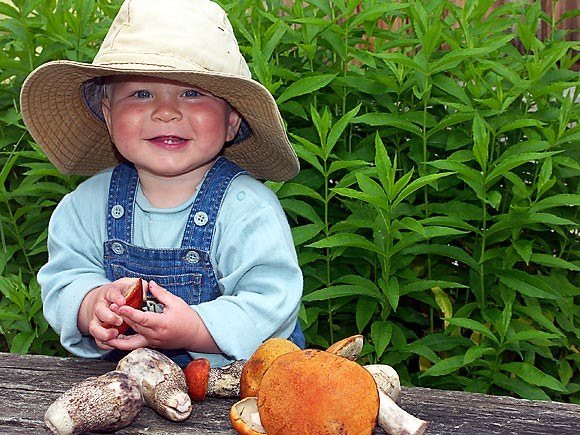
By the age of seven, the children's gastrointestinal tract has completed its formation, and wild mushrooms can begin to be given. Processing of the product must be thorough; pickled and canned mushrooms are out of the question! You can cook sauces, soups and other delicacies. If you doubt your child’s ability to digest this food, simply feed it sauces without the mushrooms themselves.
If a child suffers from abnormalities in the digestive system, feeding mushrooms is allowed only from the age of 10 years.
Harm from mushrooms
Why do pediatricians strictly prohibit feeding babies mushrooms, and at what age can a child eat a healthy forest delicacy? If pediatricians and nutritionists disagree about fruit and vegetable baits, then in the case of mushrooms they are unanimous: you can’t! What is the reason for such a categorical refusal? When can you eat at all?
The fact is that the gastrointestinal tract of children begins to function fully only from the age of seven.
Giving a small child a product that is difficult to digest means harming his digestive system.
There are two main reasons why mushrooms are prohibited for children:
- the presence of chitin in mushrooms;
- poor ecology of the environment.
Chitin is a substance that is practically not absorbed by the human body: the shell of animals is formed from this element. It is clear that loading a baby’s gastrointestinal tract with such food is simply unacceptable. An adult stomach has difficulty digesting such an education, but a child’s stomach cannot at all.
The property of any mushroom is to absorb everything that is in the air. A mushroom is a sponge that is filled with harmful substances found in abundance in our environment. This includes acid rain, emissions from car engines, and much more. All this ends up in the tissues of forest mushrooms.
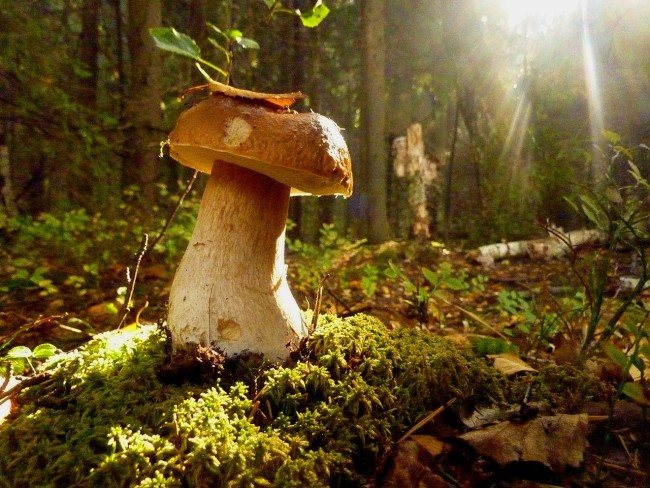
What about our ancestors? Since how old have they been feeding their children mushrooms? In ancient times there were no pediatricians and no periodic table, and everything could be given to eat! In those days, a child could be given anything to eat, because the environment was not spoiled by the chemical industry and harmful emissions into the atmosphere.





